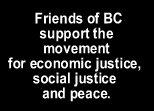
|
||||||||||||||||||||||
 |
||||||||||||||||||||||
 |
||||||||||||||||||||||
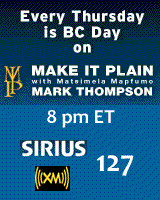 |
||||||||||||||||||||||
 |
||||||||||||||||||||||
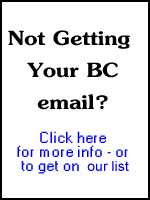 |
||||||||||||||||||||||
 |
| The current issue is always free to everyone |
|
|
 |
|
We’re happy to have a special Mothers’ Day focus this week, not because the holiday is so big for card, gift, flower and restaurant businesses, but because Mothers’ Day has its roots in the Peace Movement. Julia Ward Howe (of Battle Hymn of the Republic fame) was an abolitionist activist who worked with families in hardship and economic turmoil on both sides of the Civil War. She saw, first-hand, the broad effects of war and how it reached beyond the wounding and death of soldiers, into the lives of the families and communities they left behind. Gradually, she conceived the idea of establishing a day to focus on world-wide peace, and an end to the slaughter of human life. A few years after the end of the Civil War, she
made an attempt to reach out to mothers and bring them into
a growing Peace Movement by establishing Mothers’ Day for Peace.
Although observances were held for several years, the Movement
eventually lost momentum, the observances ceased and her attempt
to establish a specific global holiday failed. What remains,
however, are the words of her proclamation, made in
Julia Ward Howe was building on work begun in
1858 by an Appalachian woman, Anna Reeves Jarvis. Anna Reeves
Jarvis had been working to improve sanitation and medical care
by forming Mothers’ Work Day Clubs among both
Within a few years, Mothers’ Day services were widely celebrated. Anna M. Jarvis then organized a letter-writing campaign to lobby for Congress to pass legislation to establish an official Mothers’ Day on the 2nd Sunday of May. The efforts initially received derision from some of the legislators, at least one of whom railed against the idea, stating that establishing such a holiday would lead to frivolous holidays for brothers, sisters, aunts and uncles. Eventually, however, the long letter-writing campaign won over Congress and on May 8th, 1914, President Woodrow Wilson signed House Joint Resolution 263, “A joint resolution designating the second Sunday in May as Mothers’ Day, and for other purposes.”
Odd, what can happen when a president gets hold of a piece of legislation for signing. From there, the custom of wearing a white carnation in memory of a deceased mother and a pink or red carnation in honor of a living mother took hold. As the custom grew, so, too, did the price of flowers (particularly carnations) when the second Sunday in May approached. In 1920, Anna M. Jarvis, by then the president of the Mothers’ Day International Association, asked that people not wear carnations. Thus began her personal struggle with florists, candy makers, gift shops, card manufacturers and all who sought to benefit financially from the holiday.
By 1923, Mothers’ Day celebrations included events to honor Gold Star Mothers who had lost sons in World War I. Again, the holiday was celebrated for something other than its original purpose of establishing a Peace Movement. In the1930s, an aging Anna was arrested for disrupting a meeting of the American War Mothers when she learned they were selling carnations for Mothers’ Day. She saw the difference between honoring war (albeit sometimes the wrenching loss from war) and working for peace and reconciliation. Finally, after spending years in a nursing home, Anna M. Jarvis passed in 1948. Beginning in the 1960s with Mothers Against the Vietnam Draft - “Not My Son, Not Your Son, Not Their Sons” - Mothers’ Day has seen a rebirth of a Mothers’ Day for Peace through direct peace actions and actions for associated issues. In 1968, Coretta Scott King, widow of the Rev. Dr. Martin Luther King, Jr., lead a Mothers’ Day march to focus attention on the plight of women and children in poverty. The 1970s saw Mothers’ Day rallies held by the National Organization for Women (NOW) to raise awareness of the need for the Equal Rights Amendment. In the 1980s, several marches for Peace marked the day, while in 2000, the Million Mom March garnered support for gun control. We mothers all have a connection with that history; we are a result of that history. For me, that connection comes mostly through my father’s mother.
She cooked and baked, she took me, as a small child “in town” to Philadelphia to shop, she sewed dresses, play clothes and even coats, knitted, crocheted, cleaned scraped knees and tended to tears. To me, she was Nana and her world revolved around us. Years later, however, she let me in on a few details of that part of her life she hadn’t shared before. She had often told me that I could grow up to do anything I wanted, but it was much later that I learned that she had been an accountant at a time when women were not accountants.
One of Nana’s “life instructions” was always to wear a slip under one’s dress (“you never know when you’ll be in an accident”). Her advice came in handy when I got caught in the “wind tunnel effect” while walking through a “tunnel” of office buildings in Boston, and again when my wrap-around skirt unwrapped itself as I was giving a presentation to the board of the non-profit agency where I worked. Nana has been gone for thirty years now, but this Mothers’ Day, I’ll reflect on the good life I did make for myself and my daughter, and on the varied and fulfilling career I created. I’ll plan my next project – sewing or crocheting – that I’m going to make for my grandson. I’ll reaffirm my commitment to working for economic justice, social justice and peace. And with apologies to Anna M. Jarvis for purchasing a flower from a florist, I’ll pin a white carnation to my dress, under which – of course – I’ll be wearing a slip. BlackCommentator.com Managing
Editor, Nancy Littlefield, has worked in social services, acquired
an MBA and had a career in Corporate |
Your comments are always welcome. e-Mail
re-print notice
If you send us an e-Mail message we may publish all or part of it, unless you tell us it is not for publication. You may also request that we withhold your name. Thank you very much for your readership. |
|
| May
8, 2008 Issue 276 |
|
| Executive Editor: Bill Fletcher, Jr. |
| Managing
Editor: |
| Publisher: Peter Gamble |
| Est. April 5, 2002 |
| Printer Friendly Version in resizeable plain text format format or pdf format. |
 |
 |
 |
| |
| |






















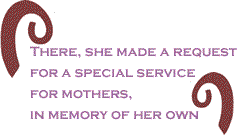 Toward
the end of the 19th century, Anna Reeves Jarvis’ daughter, Anna
M. Jarvis, influenced by the work of both women, began her effort
to establish a Mothers’ Day for Peace.
Toward
the end of the 19th century, Anna Reeves Jarvis’ daughter, Anna
M. Jarvis, influenced by the work of both women, began her effort
to establish a Mothers’ Day for Peace. 
 As
seems to be so often the case, one intention turns into something
else entirely. In signing the legislation, President Wilson
also issued a proclamation which “call[ed] upon the Government
officials to display the United States flag on all Government
buildings, and the people of the United States to display the
flag at their homes or other suitable places on the second Sunday
in May, as a public expression of love and reverence for the
mothers of our country.” The idea of a Mothers’ Day for Peace
had morphed into a nationalistic display as an “expression of
love and reverence for the mothers of our country” instead of
a call to world-wide Peace.
As
seems to be so often the case, one intention turns into something
else entirely. In signing the legislation, President Wilson
also issued a proclamation which “call[ed] upon the Government
officials to display the United States flag on all Government
buildings, and the people of the United States to display the
flag at their homes or other suitable places on the second Sunday
in May, as a public expression of love and reverence for the
mothers of our country.” The idea of a Mothers’ Day for Peace
had morphed into a nationalistic display as an “expression of
love and reverence for the mothers of our country” instead of
a call to world-wide Peace.

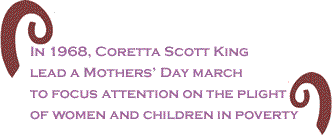 As
a Philadelphian, my Nana, born in 1890, probably attended some
of those early Mothers’ Day services as they spread, first in
churches throughout the city, then throughout the country. As
a suffragist, some of the marches in which she participated
may have occurred on Mothers’ Day. But I knew her as the grandmother
who took on the mothering of my sisters and me when our own
mother died.
As
a Philadelphian, my Nana, born in 1890, probably attended some
of those early Mothers’ Day services as they spread, first in
churches throughout the city, then throughout the country. As
a suffragist, some of the marches in which she participated
may have occurred on Mothers’ Day. But I knew her as the grandmother
who took on the mothering of my sisters and me when our own
mother died.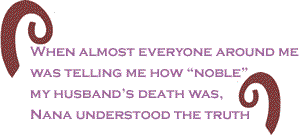 One
night I sat in her kitchen, feeling lost as a young, new war
widow with a new baby. It was then that I learned of her anti-war
conviction and discovered a new kinship with her. When almost
everyone around me was telling me how “noble” my husband’s death
was, Nana understood the truth. She had lost her brother in
WWI, and knew, as I did, that death in war is not “noble” –
it’s not anything but death, and a waste. I wasn’t able to cry,
but she cried for me. And then she reminded me that I could
be anything I wanted to be, and helped me to see that although
my life would not be what I had thought it would be, I could
make of it something else – something good for my daughter and
for me. She helped me to feel some peace that night, sitting
in her kitchen.
One
night I sat in her kitchen, feeling lost as a young, new war
widow with a new baby. It was then that I learned of her anti-war
conviction and discovered a new kinship with her. When almost
everyone around me was telling me how “noble” my husband’s death
was, Nana understood the truth. She had lost her brother in
WWI, and knew, as I did, that death in war is not “noble” –
it’s not anything but death, and a waste. I wasn’t able to cry,
but she cried for me. And then she reminded me that I could
be anything I wanted to be, and helped me to see that although
my life would not be what I had thought it would be, I could
make of it something else – something good for my daughter and
for me. She helped me to feel some peace that night, sitting
in her kitchen.


